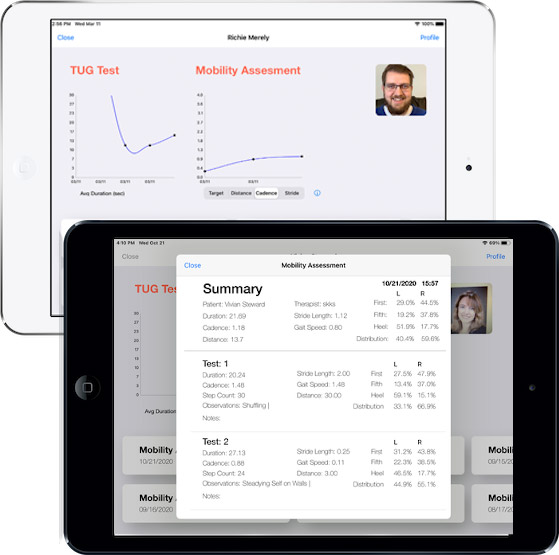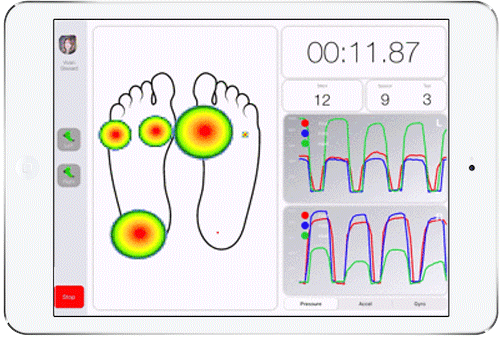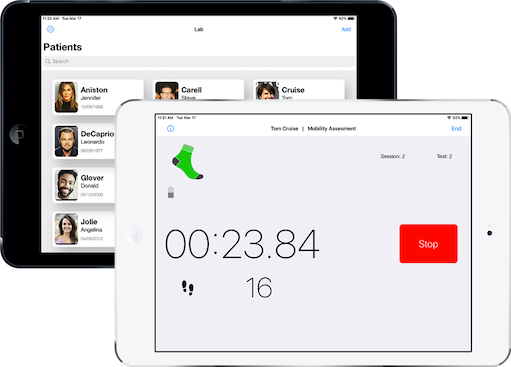Integrating a Progressive Mobility Program
Integrated into routine medical care, a progressive mobility improvement program can identify patients with high readmission risks and a better use of resources for managing a patient’s length of stay.

Understanding the Metrics
The total amount of time if patient takes to complete a single assessment.
The number of cycles in a minute. Cadence is different from speed, since a small person may have to walk with a higher cadence to have the same speed than a much taller person. Cadence has been shown to be a stable parameter over age (Winter et al., 1990).
The total distance the patient travels.
Describes the distance between two successive footprints on the ground, from the heel of a foot to the heel of the same foot, one cycle after. This parameter may be strongly influenced by anthropometric factors: if the subject is tall, he may have a higher stride length.
The forward speed of one cycle. It is a general measure of subject’s fitness since higher speed is a marker of more confidence and physical ability.
The total percentage of weight distribution between the patient's left and right foot.
The total number of steps the patient takes during an assessment.
The number of times a patient's foot contacts the ground toes-first during the foot strike phase of a mobility assessment walking.
The number of times a patient's foot contacts the ground heel-first during the foot strike phase of a mobility assessment walking.


